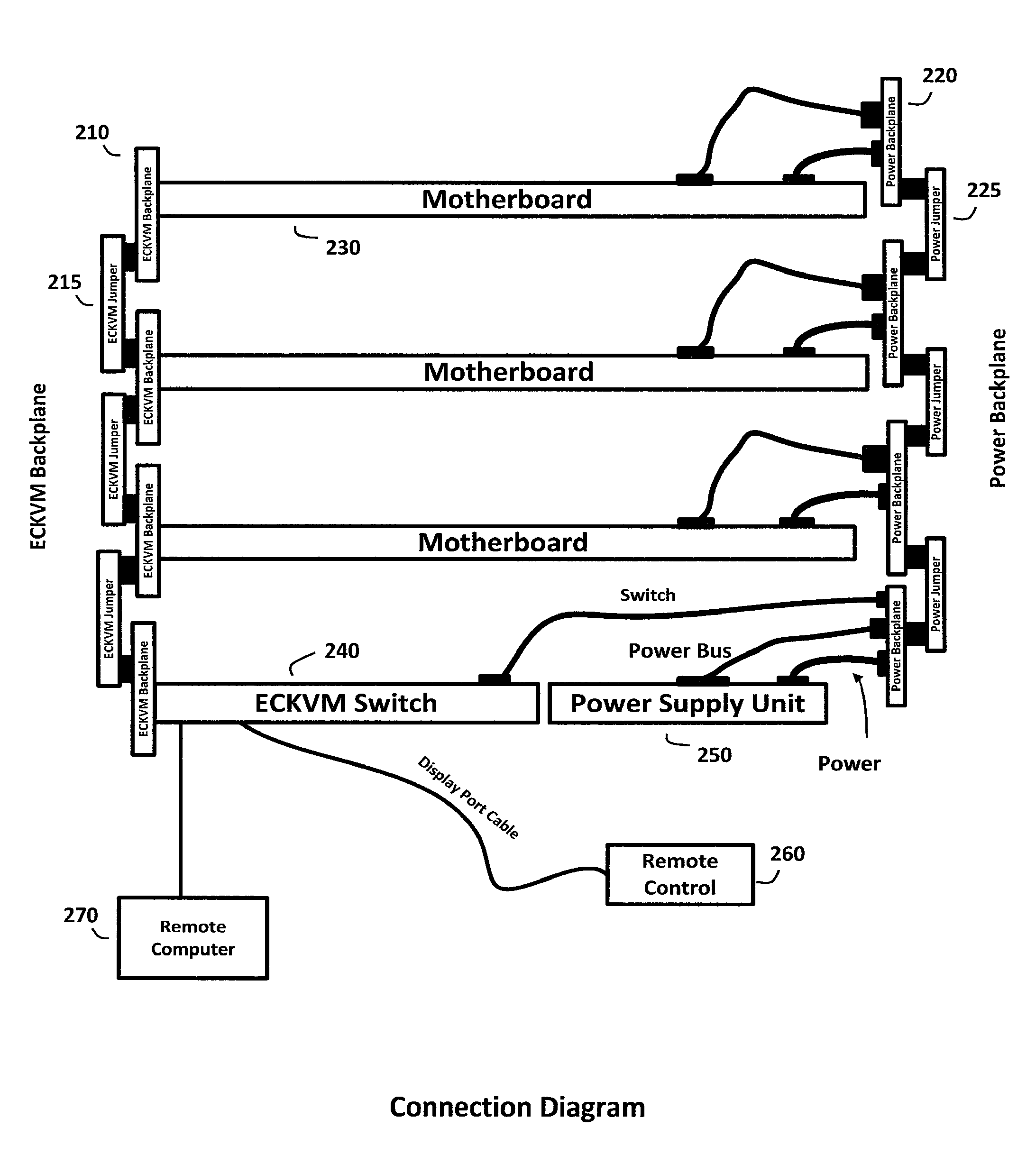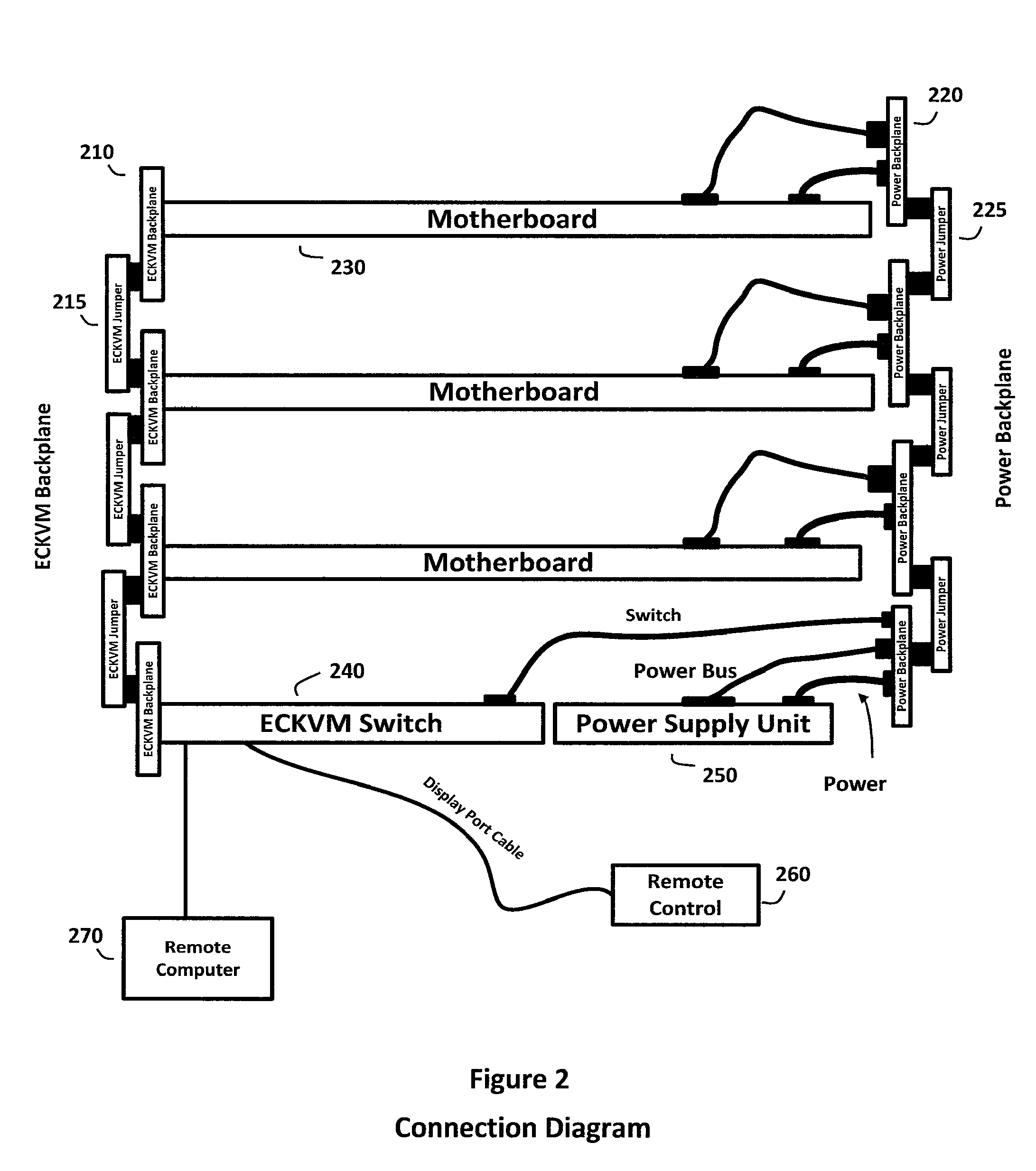Adaptive computing system with modular control, switching, and power supply architecture
a computing system and modular control technology, applied in the direction of display/control unit casings, instruments, electrical apparatus casings/cabinets/drawers, etc., can solve the problems of increasing power consumption and thermal output in small areas, crowded or cluttered work spaces, and new concerns that typical information technology solutions have failed to address, etc., to simplify cabling and deployment, reduce initial cost, and simplify the effect of deploymen
- Summary
- Abstract
- Description
- Claims
- Application Information
AI Technical Summary
Benefits of technology
Problems solved by technology
Method used
Image
Examples
Embodiment Construction
[0025]According to one aspect of the invention, FIG. 1 illustrates an exemplary industrial design 100 associated with the adaptive computing system described herein. In particular, the industrial design 100 may generally address concerns relating to power consumption and thermal output in small areas, physical dimensions suitable in limited work spaces, cable management, easy assembly, deployment, and service, low initial cost, among other factors that relate to user needs to deploy multiple computers in a work space. For example, in one implementation, the industrial design 100 shown in FIG. 1 may permit users to deploy one or more computer modules 120 having different processor and memory configurations to meet different computing needs and identical motherboards to simplify deployment. Furthermore, relative to traditional desktop computers, the industrial design 100 may allow users to realize savings in the deployment space, power consumption, and thermal output associated with t...
PUM
 Login to View More
Login to View More Abstract
Description
Claims
Application Information
 Login to View More
Login to View More - R&D
- Intellectual Property
- Life Sciences
- Materials
- Tech Scout
- Unparalleled Data Quality
- Higher Quality Content
- 60% Fewer Hallucinations
Browse by: Latest US Patents, China's latest patents, Technical Efficacy Thesaurus, Application Domain, Technology Topic, Popular Technical Reports.
© 2025 PatSnap. All rights reserved.Legal|Privacy policy|Modern Slavery Act Transparency Statement|Sitemap|About US| Contact US: help@patsnap.com



